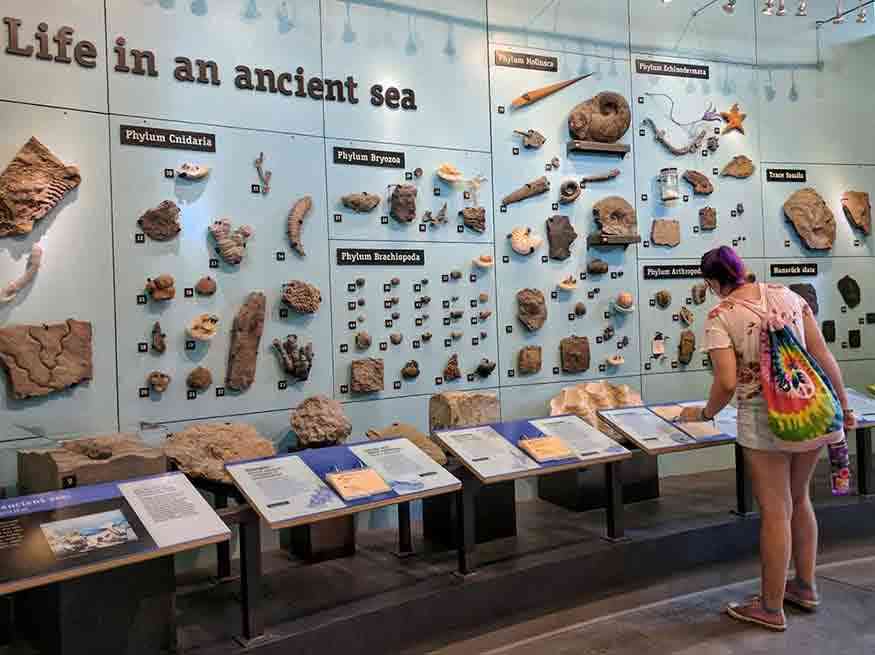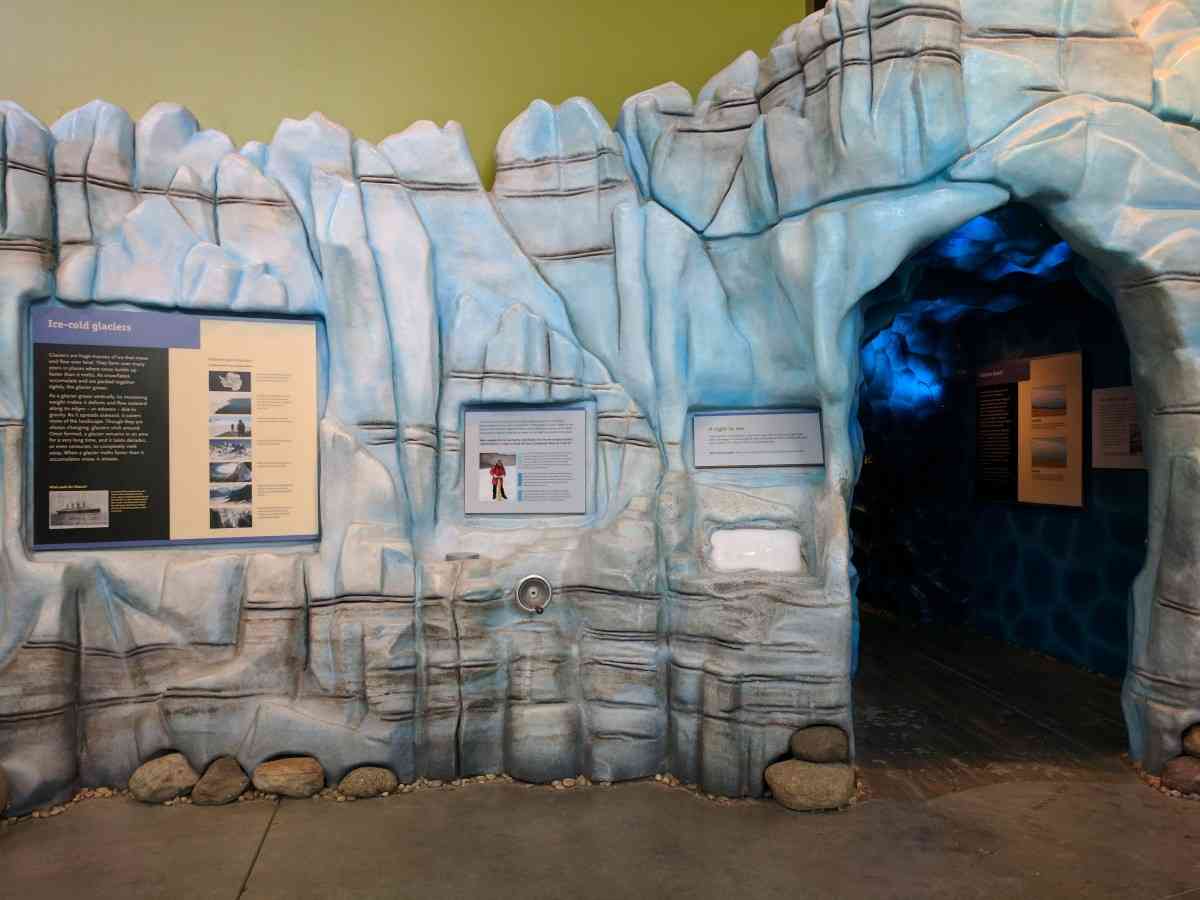The Museum of the Earth, located eight minutes north of downtown Ithaca, focuses on life beginning in the Cambrian Period, but it covers a wide range of Earth’s history spanning 4.5 billion years.
The museum explores the entire Phanerozoic Eon, including the Paleozoic era (known for plants), the Mesozoic era (known for dinosaurs, birds, and the breakup of Pangaea), the Cenozoic era (known for mammals), and our current Quaternary period (known for the Ice Age and humans).

You enter the building in a glass-enclosed atrium. There is an admission desk, gift shop, introduction video, and a ramp leading down to the main exhibits. Along the ramp is a stunning timeline of Earth’s history.

Spend a few minutes examining the Rock of Ages, Sands of Time tiles along the lower-level ramp. These tiles depict one million years of fossils displayed at their point of existence along the timeline.

At the bottom of the ramp, you’ll encounter the museum’s current exhibit. During our visit, the exhibit featured the 290 million-year-old Helicoprion Buzzsaw Shark.


The Journey Through Time exhibit focuses on significant events in Earth’s history and particularly emphasizes New York State’s geologic history. Interactive displays help visitors understand and relate to the information presented.

A section is focused primarily on New York’s geology when we were located closer to the Equator, slowly becoming part of the Pangean continent (335-175 Mya). As evidenced by the fossils we find today, New York was covered in a tropical sea during the Devonian period (420-358 Mya).
When you visit the Penn Dixie Paleontological Education Center south of Buffalo, you can dig for fossils of sea lilies and trilobites and keep what you find.




As you proceed through sections dedicated to specific historical periods, you’ll find videos, hands-on activities, and colorful information boards about each era or mass extinction event to help you understand the time and place.




Information about the Museum of the Earth
Cost: There is an admission fee
Located north of the City of Ithaca, 95 minutes / 85 miles from Rochester (get directions)
More information: priweb.org
Explore More
Spend a day in the City of Ithaca, exploring the waterfalls, restaurants, shops, and festivals that make this Ivy League college town unique.
Penn Dixie Fossil Park and Nature Reserve
Penn Dixie Fossil Park is a hidden gem just 10 miles south of Buffalo. Visitors can find and collect 380 million-year-old fossils.
Geologic History of the Rochester Area
These day trips into Rochester’s geologic history will remind you just how amazing our corner of the Earth is.
Transformative Travel Destinations
Instead of being an escape, I see these places as opportunities that encourage us to transcend space, time, and our state of mind.
The bluffs in Chimney Bluffs State Park are fragile drumlins, like all of the truncated drumlins along this section of shoreline.
Have you been to the Museum of the Earth?
I’d love to hear from you—please share your thoughts and experiences in the comments below.


Help Support My Work
People often ask if I get free access to the places I visit. The answer is no—unless I’m invited to a special preview or offered behind-the-scenes access through my media role. Most of the time, I don’t even mention Day Trips Around Rochester, New York when I visit a place. I want to have the same experience you would.
I create and share this content because it brings me joy—and I hope it adds value to your adventures, too.
If my work has helped you explore and appreciate the Rochester area, please consider becoming a paid subscriber on Substack. You’ll receive an email whenever I publish new content and have the chance to connect with a growing community of local explorers.
Thank you for supporting my efforts to keep producing meaningful and helpful content.
Thank you!
Debi



